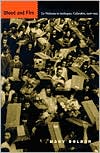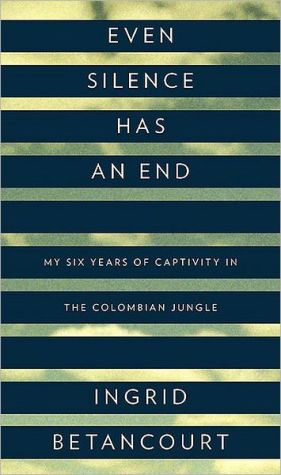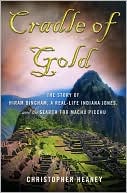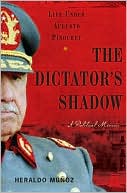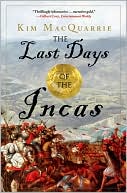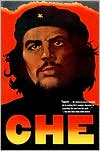Blood and Fire: La Violencia in Antioquia, Colombia, 1946-1953 (Latin America Otherwise)
Between 1946 and 1966a surge of violence in Colombia left 200,000 dead in one of the worst conflicts the western hemisphere has ever experienced. the first seven years of this little-studied period of terror, known as la Violencia, is the subject of Blood and Fire. Scholars have traditionally assumed that partisan politics drove La Violencia, but Mary Roldán challenges earlier assessments by providing a nuanced account of the political and cultural motives behind the fratricide. Although the...
Search in google:
Between 1946 and 1966a surge of violence in Colombia left 200,000 dead in one of the worst conflicts the western hemisphere has ever experienced. the first seven years of this little-studied period of terror, known as la Violencia, is the subject of Blood and Fire. Scholars have traditionally assumed that partisan politics drove La Violencia, but Mary Roldán challenges earlier assessments by providing a nuanced account of the political and cultural motives behind the fratricide. Although the author acknowledges that partisan animosities played an important role in the disintegration of peaceful discourse into violence, she argues that conventional political conflicts were intensified by other concerns. Through an analysis of the evolution of violence in Antioquia, which at the time was the wealthiest and most economically diverse region of Colombia, Roldán demonstrates how tensions between regional politicians and the weak central state, diverse forms of social prejudice, and processes of economic development combined to make violence a preferred mode of political action. Privatization of state violence into paramilitary units and the emergence of armed resistance movements exacted a horrible cost on Colombian civic life, and these processes continue to plague the country.Roldan's reading of the historical events suggests that Antioquia's experience of la Violencia was the culmination of a brand of internal colonialism in which regional identity formation based on assumptions of cultural superiority was used to justify violence against racial or ethnic "others" and as a pretext to seize land and natural resources. Blood and Fire demonstrates that, far from being a peculiarity of the Colombians, la Violencia was a logical product of capitalist development and state formation in the modern world. This is the first study to analyze intersections of ethnicity, geography, and class to explore the genesis of Colombian violence, and it has implications for the study of repression in many other nations.About the Author Mary Roldan is Associate Professor of Latin American History at Cornell University. Foreign Affairs [Roldán] brilliantly describes the complex historical context behind the violence . . .
Blood and Fire\ La Violencia in Antioquia, Colombia, 1946-1953 \ \ By MARY ROLDÁN \ Duke University Press\ Copyright © 2002 Duke University Press\ All right reserved.\ ISBN: 978-0-8223-2903-9 \ \ \ Chapter One\ Medellín and Core Municipalities \ Violence in Antioquia developed in two major stages over a seven-year period. The first stage began in 1946 and ended in 1949, the second began in 1950 and lasted until the military toppled the Conservative government of Laureano Gómez on June 13, 1953. During the first phase, violence revolved around three central objectives: achieving Conservative electoral domination in municipal, regional, and national elections; replacing Liberals in state-determined patronage or administrative positions; and crushing organized labor affiliated with the Confederation of Colombian Workers (CTC).\ Violence during the first stage was selective and sporadic; it was aimed primarily at Liberals employed by the state and at towns where the level of integration between the municipal and regional government suggested that officially executed harassment, fraud, and intimidation were likely to win an electoral advantage for the Conservative party. The towns most severely affected by electoral violence were thus concentrated in centrally settled or core municipalities where the Conservative party was well represented, local government was linked through avariety of offices and mechanisms to regional administrative power structures, and local residents reproduced most closely the values associated with Antioqueñidad. This early phase of violence initially differed very little from the age-old struggles over offices and votes typical of Colombian political competition since the nineteenth century. Two issues, however, shifted the course of partisan violence and considerably intensified its potential reverberations: the assassination of Liberal populist Jorge Eliécer Gaitán in April 1948 and the creation of state-endorsed Conservative civilian police forces (contrachusmas) in the aftermath of the murder. Further, when official intimidation failed to wrest electoral victories or jobs away from the opposition in early 1949, the measures adopted by selective sectors of the regional government and the Conservative party in their quest for political domination became more extreme. The escalation of partisan violence provoked severe dissension within the regional Conservative and Liberal parties and revealed the existence of a threshold or boundary beyond which many Antioqueños were unwilling to go in the pursuit of partisan objectives. The intensification of state-directed violence also exacerbated tensions between municipal and regional authorities over issues of prerogative and jurisdiction and, ultimately, prompted Liberals in peripheral areas to take up arms against the state.\ This chapter lays out the complicated and, at various points, contested path by which partisan conflict evolved into armed confrontation between the state and the opposition and attempts to uncover the ways in which nonpartisan issues were implicated in Liberal/Conservative conflict. La Violencia intersected with and magnified a series of latent and unresolved struggles concerning the power of the state, economic development, and class relations in Antioquia. As familiar partisan tensions threatened to develop in directions that challenged the social, economic, and political status quo, a still-influential elite sector intervened to mediate the consequences of violence in core municipalities. By 1949 it became evident, however, that violence waged over elections and appointments had evolved in focus and location and transcended the parameters of traditional partisan conflict.\ Conservative Clientelism and Electoral Violence\ On August 7, 1946, moderate Conservative, Mariano Ospina Pérez was sworn in as Colombia's president after an intensely contested electoral battle. Two Liberal candidates, Liberal populist Jorge Eliécer Gaitán and the official Liberal party candidate, Gabriel Turbay, split Colombia's Liberal majority and brought to an end sixteen years of uninterrupted Liberal control of the presidency. In his native state of Antioquia where Conservative voters still slightly outnumbered Liberals, Ospina proved a popular candidate among the region's businessmen, coffee growers, and industrialists who formed the core of the region's elite. Local capitalists hoped that Ospina's victory might signal a return to the politics of bipartisan compromise, a restoration of the pre-1930 elite alliance that many remembered nostalgically as an era of social peace unmarred by the political demands of the lower classes or emergent professional politicians. Antioquia was a province where career politicians were viewed with suspicion and where elite Liberals and Conservatives had constructed and promoted an image of themselves as selfless statesmen whose political participation was motivated by civic duty, not vile ambition. Ospina's lack of direct experience in electoral politics, his impeccable business credentials, and his ideological moderation appealed to a regional bourgeoisie that had grown wary of what they perceived as increasingly extreme tendencies in both parties and the rising influence of parvenu political ambitions.\ Among other Colombian Conservatives, however, Ospina Pérez was less popular. Indeed, his candidacy had been the result of reluctant compromise within the national party leadership, many of whose followers would have preferred to have made the brilliant but controversial national party chief, Laureano Gómez, their official candidate. Gómez had made a name for himself as a fierce nationalist, an outspoken admirer of Franco's Spain and a critic of Communism, an unabashed defender of Hispanic values, and a corporatist for whom the increasing secularization of modern society and mass participation in politics were anathema. The Conservative party chief was also a master orator, an ideological incendiary whose followers revered him with an intensity that bordered on religious fervor, but his intransigence elicited strong reactions from Antioquia's Conservatives as well as the Liberal opposition. Gómez's often mystical and violent rhetoric particularly frightened Antioquia's Conservative moderates who feared the repercussions of pursuing the hegemonic partisan objectives the party leader and his followers embraced. Temporarily thwarted from the presidency by moderates in his party, Gómez resigned himself to ensuring that those loyal to him would exert instead a powerful presence in local and regional politics during Mariano Ospina Pérez's administration.\ In contrast to members of the regional elite, Antioqueño non-elite politicians, many of whom formed part of an incipient middle sector of first-generation professionals who had never previously held office, repudiated moderation. The middle sector believed bipartisan or supra-partisan arrangements concentrated power in the hands of a small, wealthy minority and relegated ideological differences between the parties to a secondary plane in the interests of promoting common economic objectives. Many middle-sector Conservatives considered Gómez a powerful ally in their ploy to undermine the region's bipartisan approach to politics. The Conservative leader had publicly attacked convivialismo, the system of elite bipartisan cooperation that shaped Colombian politics from 1910 to 1930 and in which Antioquia's elite had played a central role. Indeed, Gómez implicitly blamed the Conservative party's fall from national power in 1930 on the willingness of Antioquia's elite to sacrifice ideology in the interests of economic modernization. When members of Antioquia's Conservative party collaborated with the Liberal government of Eduardo Santos (1938-1942), for instance, Laureano Gómez excoriated them mercilessly as mercenaries interested only in defending their economic interests at the expense of both party doctrine and non-elite party members. Antioquia's middle-sector Conservatives, who sought to distinguish themselves from the elite, adeptly invoked Gómez's inflammatory anti-Liberal and anti-Communist rhetoric, took up the banners of militant Catholicism, and equated the politics of compromise with a utilitarian conception of society and a lack of party fervor. Ideological differences were then deployed to justify wresting control of public patronage positions away from the opposition and the reins of regional power away from moderates in both parties.\ Three significant changes took place during the period of Liberal rule between 1930 and 1946 that sharpened distinctions between elite and emergent political forces within the parties and made competition for control of state patronage after 1946 an unprecedented component of electoral victories in Antioquia. First, the restructuring of capital and production following the 1929 stock market crash and the ensuing Great Depression prompted migration from coffee-producing and traditional agricultural areas such as those located immediately to the south and east of Medellín toward the provincial capital and new areas of colonization on Antioquia's periphery. The specter of social conflict arose in newly colonized areas as squatters, recent migrants, foreign-owned companies, and regional capitalists competed for control in areas where political mechanisms of expression and infrastructure were weak or non-existent. Simultaneously, young, provincial aspirants to power migrated to Medellín in search of educational, economic, and political opportunities in unprecedented numbers. These developments were not necessarily or directly a consequence of the rise of the Liberal party to power, but the temporal coincidence of the Conservative Party's political decline and an increase in social and economic dislocation within Antioquia produced the appearance of a causal relationship, particularly in the eyes of a nervous elite worried about populist and radical threats to their political control.\ Second, when Liberal Alfonso López Pumarejo's first administration (1934-1938) passed legislation expanding the size of Colombia's electorate and recognizing and institutionalizing the political importance of organized labor, the tenor of regional political debate changed. Before the implementation of López's legislative changes, class-based appeals directed specifically at the needs or interests of the lower and especially the urban working class had simply not constituted an important component of political discourse in Antioquia. The newly enhanced presence of Communist and left Liberal leadership in labor unions, and the dissemination of political programs directed specifically at workers and the disenfranchised poor, based on their identity as members of a distinct class rather than on their regional identity as suprapartisan Antioqueños, brought into sharp relief the distinctions between "right" and "left." The acrimonious character of political debate between members of the two parties increased, as did divisions within the parties between an elite alarmed by López's reforms irrespective of their partisan affiliation and middle- and lower-class sectors in both parties, some of whom viewed ideologically-based partisan differences as an opportunity to press for political inclusion.\ Finally, the central state's power and attributions grew under López Pumarejo. As the state's power expanded, the Liberal party worked to create links between the party and the state that would enable Liberal brokers to control the distribution of public patronage jobs, access to government intercession, and public monies. As new ministries such as Labor (trabajo) emerged, and as individuals organized into labor unions affiliated with the Confederation of Colombian Workers, the importance of brokers who could control lower-class voters, especially urban voters, increased dramatically. The expansion of public works and patronage jobs that accompanied the electoral and political changes introduced by López prompted excluded regional Conservatives to associate partisan-determined patronage hiring as a policy identified with-and crucial to the maintenance of-Liberal domination. By the eve of the Conservative party's return to power in 1946, control of the central state's largesse and the monopoly of patronage distribution thus emerged to a previously unprecedented degree as crucial preconditions of political success in Antioquia. This phenomenon drove a sizable wedge between middle-sector politicians anxious to build a political machine like that constructed by their Liberal counterparts and a regional Conservative party elite anxious to restore the status quo of the pre-1930 era.\ The generation of men who had governed Antioquia's political fortunes from the turn of the twentieth century to 1930 was not primarily or exclusively dependent upon political careers for its place in society or political influence. Instead, these men combined political leadership with their roles as captains of industry, financiers, and coffee exporters and growers. They relied on familial connections and reputations as nonpartisan "statesmen" committed to technocratic and development-oriented policy-making to cement their political claims. Antioquia's elite was more concerned with keeping social unrest at bay than in monopolizing government positions; they attended the same schools, shared the same professions, and married into one another's families across party lines. Despite differences in partisan affiliation (which were often the result of arbitrary or serendipitous family traditions dating back to the independence era and the nineteenth century) many members of Antioquia's elite shared a worldview. This worldview was shaped by a shared education under the Jesuits at schools such as San Ignacio in Medellín or at the public Universidad de Antioquia and the regional School of Mines. The shared experience of studying under the Jesuits may also partially account for the frequency of anti-Communist discourse, as well as the invocation of the ideals of social justice, as promulgated in papal encyclicals such as Leo XIII's Rerum Novarum, among Antioquia's elite political leaders of both affiliations.\ The existence of a relatively cohesive regional approach to politics among Antioquia's elite leaders born before 1910 ensured that no definite line divided the public from the private sector while the regional bourgeoisie ruled the department. In moments of crisis a governor such as Camilo C. Restrepo (Liberal) might appeal to other members of the elite from both sides of the partisan divide, for instance, to bail out the departmental treasury and avoid a rebellion by unpaid public-sector workers, without putting up any other collateral than his word as a gentleman-an action largely inconceivable in any other Colombian department. Although Antioquia's elite belonged to both parties and had philosophical differences, Liberal and Conservative elites shared an understanding of government as a technocratic endeavor, and their central concern was maintaining the status quo. Furthering economic development and maintaining social stability defined the regional political agenda.\ In contrast to the bipartisan elite, emergent middle-sector politicians were neither wealthy nor well connected. Nor was the emergent middle sector inscribed in networks of familial, business, educational, professional, or social associations with the opposition to the same degree that the elite was. The only means open to the middle sector in its quest for political power, moreover, was to generate votes, preferably among a newly enfranchised, lower-class population of urban voters. Bipartisanship was of course antithetical to such an enterprise. Unlike the regional elite who once depended on deference, paternalism, and kin-or geographically-based clientelist networks to attract voters, emergent, middle-sector politicians had to exaggerate, not underplay, partisan differences in order to distinguish themselves from politicians of comparable social extraction in the opposition. In the thirties and forties, as never before in Antioquia, politics revolved around the struggle to amass voter support and to exchange this for patronage positions and subsidies provided by an expanding central state.\ (Continues...)\ \ \ \ \ Excerpted from Blood and Fire by MARY ROLDÁN Copyright © 2002 by Duke University Press. Excerpted by permission.\ All rights reserved. No part of this excerpt may be reproduced or reprinted without permission in writing from the publisher.\ Excerpts are provided by Dial-A-Book Inc. solely for the personal use of visitors to this web site. \ \
AcknowledgmentsIntroduction11Medellin and Core Municipalities432Bajo Cauca, Magdalena Medio, and the Northeast1093Uraba and Western Antioquia1714Urrao and the Southwest229Epilogue281App. A: Tables299App. B: Maps311Notes315Bibliography365Index383
\ Foreign Affairs[Roldán] brilliantly describes the complex historical context behind the violence . . .\ \ \ \ \ J. EwellRecommended.—Choice\ \ \ James D. BowenRoldán adds new layers of depth and complexity to the historiography of this troubled country and explores the links between la Violencia and contemporary violence in Colombia. . . . Blood and Fire fits nicely with the existing literature on violence in Colombia and at the same time challenges some of the underlying assumptions that have dominated the study of la Violencia. . . . [H]er contributions are useful, and the book should be read by anyone seeking an in-depth analysis of the roots of both la Violencia and the contemporary civil war, as well as anyone interested in understanding the causes and consequences of protracted violence in any area of the world.—History: Review of New Books\ \
